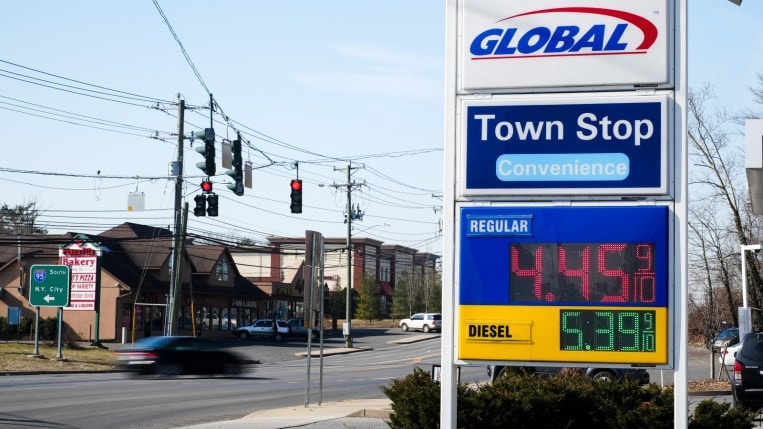[ad_1]
 Gasoline prices have plateaued in recent weeks, but the price of diesel fuel just hit a new record high. A gallon of diesel costs an average of $5.43 nationwide this morning. A year ago, that figure was just $3.09.
Gasoline prices have plateaued in recent weeks, but the price of diesel fuel just hit a new record high. A gallon of diesel costs an average of $5.43 nationwide this morning. A year ago, that figure was just $3.09.
The rising cost of diesel affects some families and commuters in the U.S. According to federal Department of Transportation statistics, about 1.5% of total passenger cars and light trucks in the U.S. use diesel engines. Diesel fuel has faded from a peak of 5% in the early 1980s.
Automakers have steadily moved away from diesel fuel for passenger cars and light trucks. In 2021, Ford even dropped the diesel option from America’s best-selling vehicle, the Ford F-150 pickup.
But those who do drive diesel engines tend to drive more annual miles than the average driver. So the people affected by a rise in diesel prices are very affected.
Diesel Costs Affect The Price of Everything
The rising cost of diesel affects the average American, though, in other ways. The U.S. Energy Information Administration notes that about 70% of diesel sales in the U.S. go to America’s trucking fleet.
The rising cost of diesel fuel increases the cost of nearly every consumer good. Even, ironically, gas-powered cars and electric vehicles. Parts are shipped to the factories that build them on trains and trucks that run on diesel. Even the destination charge automakers tack onto every car has been rising due to diesel price increases.
It also threatens to drive truck owner-operators out of business. That business tends to operate on contracts with fixed prices that don’t adjust to the cost of fuel. Rising diesel prices eat into the profits of truck owners – even those who are leasing their trucks to own (this recent segment from HBO’s “Last Week Tonight with John Oliver” explains it well).
Many farm tractors also run on diesel, so rising diesel prices increase the cost of food.
Why Are Diesel Prices Rising When Gas Prices Aren’t?
Diesel tends to be more expensive than gas for several reasons. But one reason primarily explains the recent shift.
It goes back to Russia’s invasion of Ukraine. Restrictions on Russian oil exports have hit Latin American and European diesel supplies hard. Those regions are much more dependent on diesel fuel, with a higher percentage of passenger cars using the expensive stuff.
Producers on America’s Gulf Coast, Bloomberg explains, “have sped up exports to Latin America and Europe,” thanks to high prices there. That leaves “the domestic pipeline supplying states along the Atlantic coast underused.”
Experts have said that the only thing that will bring down gas prices in the current market is for Americans to use less gasoline. We briefly did as prices rose, though gasoline use is back on the rise now as summer temperatures arrive.
Some of us can afford to do that in our daily lives by combining trips, working from home if possible, and learning to drive more efficiently. But America’s truckers can’t drive less without leaving store shelves bare.
Read Related Stories:
[ad_2]
Source link
